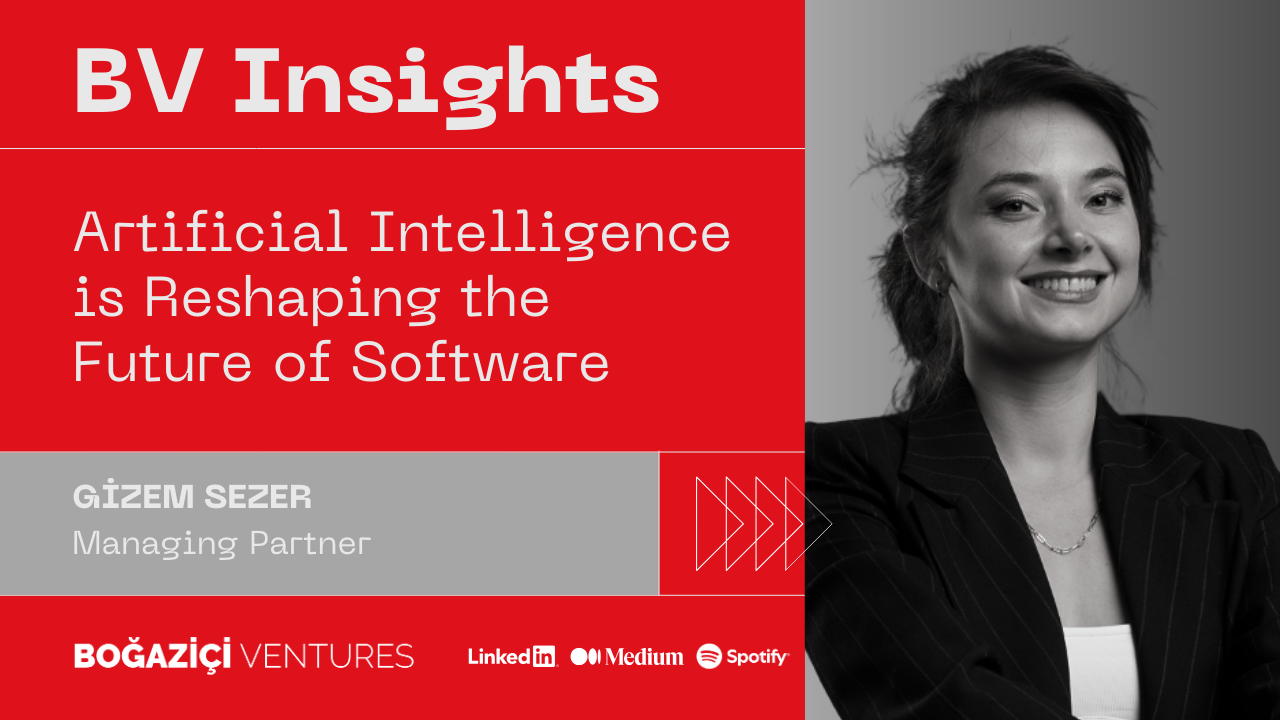The Rise of the Application Layer in Artificial Intelligence
In recent years, the biggest breakthrough in artificial intelligence has occurred at the foundation layer, driven by the widespread adoption of large language models (LLMs). While players such as OpenAI, Anthropic, and Mistral have taken the lead in the model race, investor interest has increasingly shifted toward the application layer. This is because model development requires vast capital and access to a limited talent pool, pushing investment decisions toward applications that are more scalable, easier to test, and hold greater potential for differentiation.

In recent years, the biggest breakthrough in artificial intelligence has occurred at the foundation layer, driven by the widespread adoption of large language models (LLMs). While players such as OpenAI, Anthropic, and Mistral have taken the lead in the model race, investor interest has increasingly shifted toward the application layer. This is because model development requires vast capital and access to a limited talent pool, pushing investment decisions toward applications that are more scalable, easier to test, and hold greater potential for differentiation.
Startups in the application layer quickly productize foundation models by tailoring them to specific use cases. They reach the market faster, gather immediate user feedback, and iterate their products rapidly. However, as model access becomes easier and open to everyone, it is increasingly difficult for these companies to create lasting competitive advantages. Many applications emerge with similar interfaces, making it harder to retain users and easier for products to be replaced.
This raises a critical question: Is an AI-based product truly building a company, or merely offering a temporary feature? In other words, is it establishing a sustainable business model, or simply providing a function that a larger platform can easily integrate? To clarify this distinction, it is worth examining examples of startups that have managed to evolve into real companies:
- Notion AI integrated AI into the core product experience, increasing per-user value and positioning AI as an integral part of the product, not just an add-on.
- Perplexity.ai combined LLMs with the search experience, creating a new use case while differentiating itself by continuously improving its product through user data.
- Harvey.ai focused on the legal vertical, offering a clear enterprise solution to a well-defined problem.
- Adept AI progressed toward company-building in the B2B space by developing solutions capable of understanding and supporting complex workflows.
A common pattern emerges: successful application-layer startups either specialize deeply in a particular vertical or build their own distribution channels to make the product indispensable. When a user abandons the product, they are not merely losing a feature but an entire workflow—making the value more enduring and strengthening the company’s sustainability potential.
Investment Perspective
From an investment standpoint, several criteria determine whether an AI application can evolve into a true company:
- Data Ownership and Differentiation – The ability to collect proprietary data and optimize models with it ensures the product evolves uniquely and separates itself from competitors.
- Distribution Capabilities – Technical strength alone is insufficient; how the product reaches users and integrates into daily life is crucial for sustainable growth.
- Depth of User Relationship – If users experience little to no value loss when abandoning the application, it becomes difficult for the company to build a lasting structure.
Ultimately, the application layer in AI presents significant opportunities. But the fate of these startups depends less on the models they use and more on their product experience, the depth of the problem they solve, and the strength of their relationship with users. Those that remain “features” may grow quickly but fade just as easily, while real companies endure by combining technology with strategy.
BVG II: A New Address for Value-Driven Investment
Investing in the AI era is not just about chasing opportunities—it is about actively shaping the future. Achieving this requires strategic selectivity, patient capital, and founder-friendly structures.
The BV Growth II Fund embodies this philosophy not just in words but in practice. Operating in an early yet advantageous market like Turkey, it aims to bring together the right founders, the right technology, at the right time. With this vision, BVG II contributes not only to investors but also to the entrepreneurship ecosystem and the ethical, scalable, and sustainable growth of AI.
About Boğaziçi Ventures
For more than a decade, we have been dedicated to contributing to and creating value within Turkey’s technology entrepreneurship ecosystem. During this time, we have leveraged our deep expertise and strong business network to support entrepreneurs. At Boğaziçi Ventures, we believe in shaping our investments by harnessing the power of technology across multiple verticals to deliver sustainable and intelligent solutions.
We invite entrepreneurs to apply for investment discussions via [email protected]
. Take the opportunity to grow your technology venture and join our global network today!


